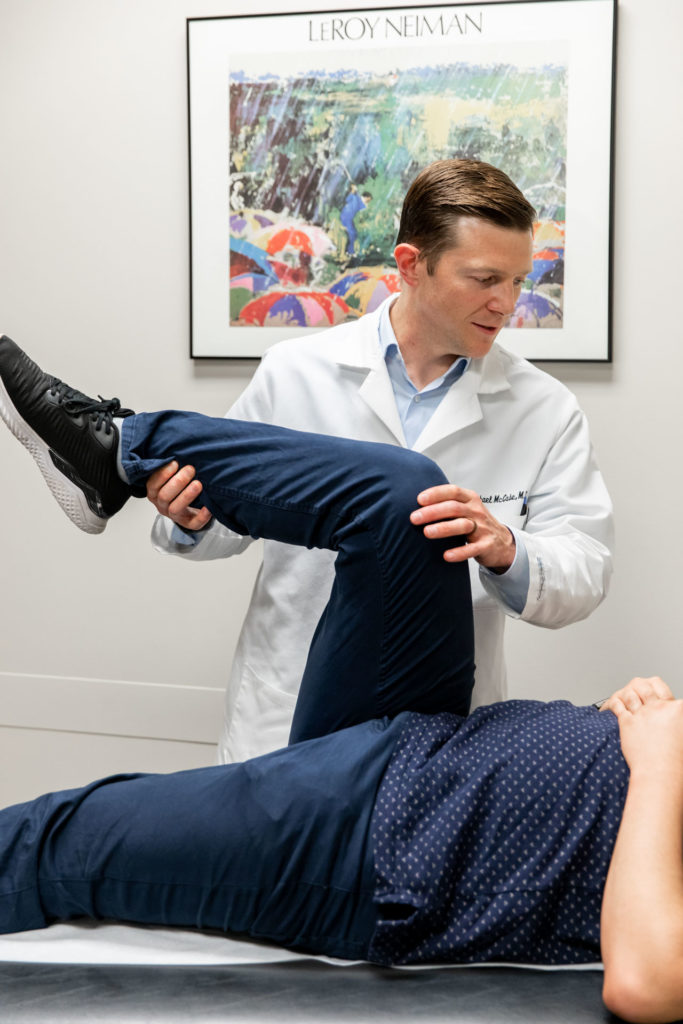

When conservative measures alone do not effectively manage your hip injury, then hip arthroscopy could be your next treatment option. For many people, however, the idea of an invasive procedure may seem daunting, especially with hip scope recovery.
As one of the top sports medicine clinics and orthopedic facilities in Kansas City, Kansas City Orthopedic Alliance has successfully treated many conditions through hip arthroscopy. From osteoarthritis pain to labrum tears and more, our hip scope procedures lead to faster recovery and more manageable pain.
What is hip arthroscopy?
Hip arthroscopy is a camera-based procedure designed to treat a variety of hip concerns and injuries. Unlike other procedures such as a knee scope, hip arthroscopy is a newer procedure.
It wasn’t until knee and shoulder arthroscopies became more popular that physicians saw more value in hip arthroscopy.
Adding traction (the method of slightly pulling down the leg bone to create a viewable space between the hip joint) made hip arthroscopy a lot more successful than in previous years. The space is crucial for the camera to take images of the joint and discover abnormalities.
During your outpatient procedure, your orthopedic surgeon will make a small incision, create traction, then insert the arthroscope (camera). After accessing the hip problem and the labrum (a ring-shaped ligament in the hip), the repair process begins. Depending on your hip, this could include:
- Reshaping the acetabular socket
- Reshaping the femoral head and/or neck
- Repairing the labrum with stitches
- Smoothing out the surrounding cartilage
- Removing inflamed tissue
What to expect with hip scope recovery
Although a hip scope is not as common as other arthroscopy procedures, a vast majority of people recover well after surgery. Those who have a higher risk for recovery complications typically have underlying conditions such as weight issues, heart disease, and diabetes. In those cases, we recommend focusing on improving your health before undergoing any kind of surgery.
Once your procedure is complete, you will need crutches for the first couple of weeks to aid mobility. In addition, you will also begin physical therapy soon after surgery since it’s crucial for walking, building strength, and regaining your full range of motion. For athletes, your physical therapist will eventually help you return to athletic activity, usually around 3 to 6 months after surgery.
When Can I Drive After an Arthroscopy Procedure?
Learn more about hip scope recovery and get started at Kansas City Orthopedic Alliance
The core of our success lies in proper diagnosis. An appointment with one of our providers includes the highest quality technology to pinpoint a patient’s underlying musculoskeletal conditions. From there, we can better understand which treatment will work best for you.
KCOA’s private practice model ensures our physicians can provide patients with the most value that doesn’t involve hidden fees or outlandish pricing.
For a thorough evaluation, call us at 913.319.7600 or schedule an appointment today.


